
Carnival in the jungle! Today, the elephant comes as a giraffe and the leopard as a crocodile.
What‘s going on? Somebody has mixed up the costumes! Now the animals are running all around
the jungle trying to complement their costumes in a fitting way. Will the peliphant find a trunk?
And will the octodile come to the party with eight tentacles or with a big mouth and razor-sharp
teeth? Get in on the act and give the animals their true form back!
The Game
Tr y to be the first to get rid of y
our hand cards. To this end, you have to lay them out so that one animal half from your
hand and another animal half on the table form a real animal.
Materials: 78 cards
60x mixed animals 6x wild cards 6x half-animals 6x real animals
Set-up of the Game
Shuffle all cards and deal 7 of them, face down, to each player! The remaining
cards form a face-down jungle pile; put the top card next to it, face up.
Look at your own cards and
don‘t show them to anybody!
Now the game can begin.
Course of the Game
The player who is the quickest to put a fitting hand card face up on top of the revealed card begins. After that, play
proceeds clockwise.
Placing a fitting card
On your turn, you put a fitting hand card on top of the previously played card in the middle of the table.
No fitting card?
If you can‘t place any fitting card on your
turn, you have to draw a card from the
jungle pile. If this card fits, you may lay it
out immediately.
A hand card is
FITTING
whenever one of its animal
halves (e.g., the head part) forms an animal that really
exists with the other animal half of the card displayed
on the table (in this example: lower body). (The other
two card halves don‘t have to fit together.)
Real-animal cards
If you play a fitting card that shows a real animal, then …
• with this symbol
on the card:
all the other players must immediately draw one card from the jungle pile.
• with this symbol
on the card:
the player(s) with the fewest hand cards must immediately draw two cards
from the jungle pile – even if you are this player.
Chameleon cards
A chameleon card always fits. You may play it onto any card. After that, you may
immediately lay out another hand card of your choice. (If it is another chameleon, you
may immediately lay out another card…)
Example: Your half-dolphin fits together with the
crocophin. Your left neighbor has to skip his turn.
His left neighbor now has to lay out an animal
that has a dolphin tail.
Half-animal cards
If you play a fitting card
that shows only one
animal half, the next
player has to skip his turn.
Discarding in between turns!!!
Even if it‘s not your turn, you may place a card in between turns if your hand card is a double-fit.
Example: Elecan and peliphant
together form an elephant as
well as a pelican. Therefore, you
may discard either of these two
cards in between your turns
if the other one is lying in the
middle of the table.
Example: This does not fit!
Peliphant and pelipus both have
the same head; but they don‘t
have the fitting lower body to
turn them into a pelican.
Example: The head of
leophant and the lower
body of crocopard
together form the
leopard. That fits!
Special Cards:
Ending and Winning the Game
The game ends as soon as one player has gotten rid of all his hand cards. This player
wins the game.
Jungle pile empty?
When the jungle pile is depleted,
shuffle the discard pile and use it
as the new jungle pile.
Unsuitable card?
If you play an unsuitable card during your turn you have to
take this card back and draw a card from the jungle pile. You
may not play this newly drawn card. After you have performed
an incorrect in-between-turns action, the game does con-
tinue with the player who would normally have had his turn.
If you want to play over several game rounds,
each player‘s remaining hand cards are written down as minus points.
• for each chameleon card, you get 5 minus points;
• for any other card, you get 1 minus point.
After the number of rounds agreed upon in advance, the player who has
the fewest minus points wins.
A hand card is a
DOUBLE-FIT
whenever its lower
body as well as its upper body, along with the two
body parts of the card on the table, each form one
animal (i.e., two animals overall). After you have
performed such an in-between-turns action, your left
neighbor continues the game.
©
2017 Zoch Verlag
Werkstraße 1
D-90765 Fürth
www.zoch-verlag.com
www.facebook.com/zochspiele
Art.Nr.: 60 110 5109
Author: Bettina Katzenberger
Illustration: Tina Kothe
English translation:
Sybille & Bruce Whitehill,
„Word for Wort“




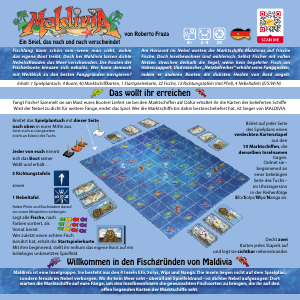
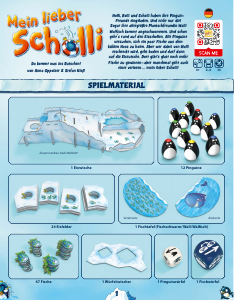

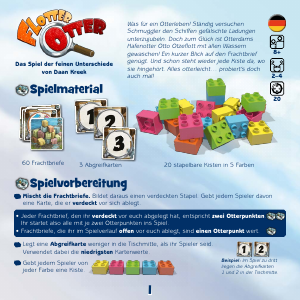


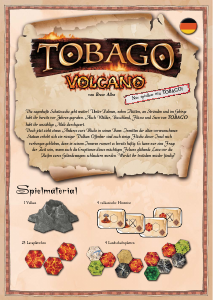
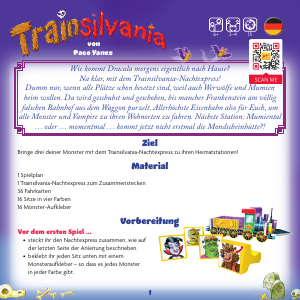
Join the conversation about this product
Here you can share what you think about the Zoch Misch-Masch. If you have a question, first carefully read the manual. Requesting a manual can be done by using our contact form.